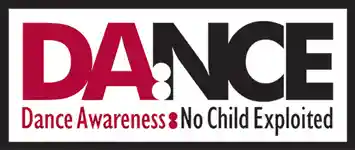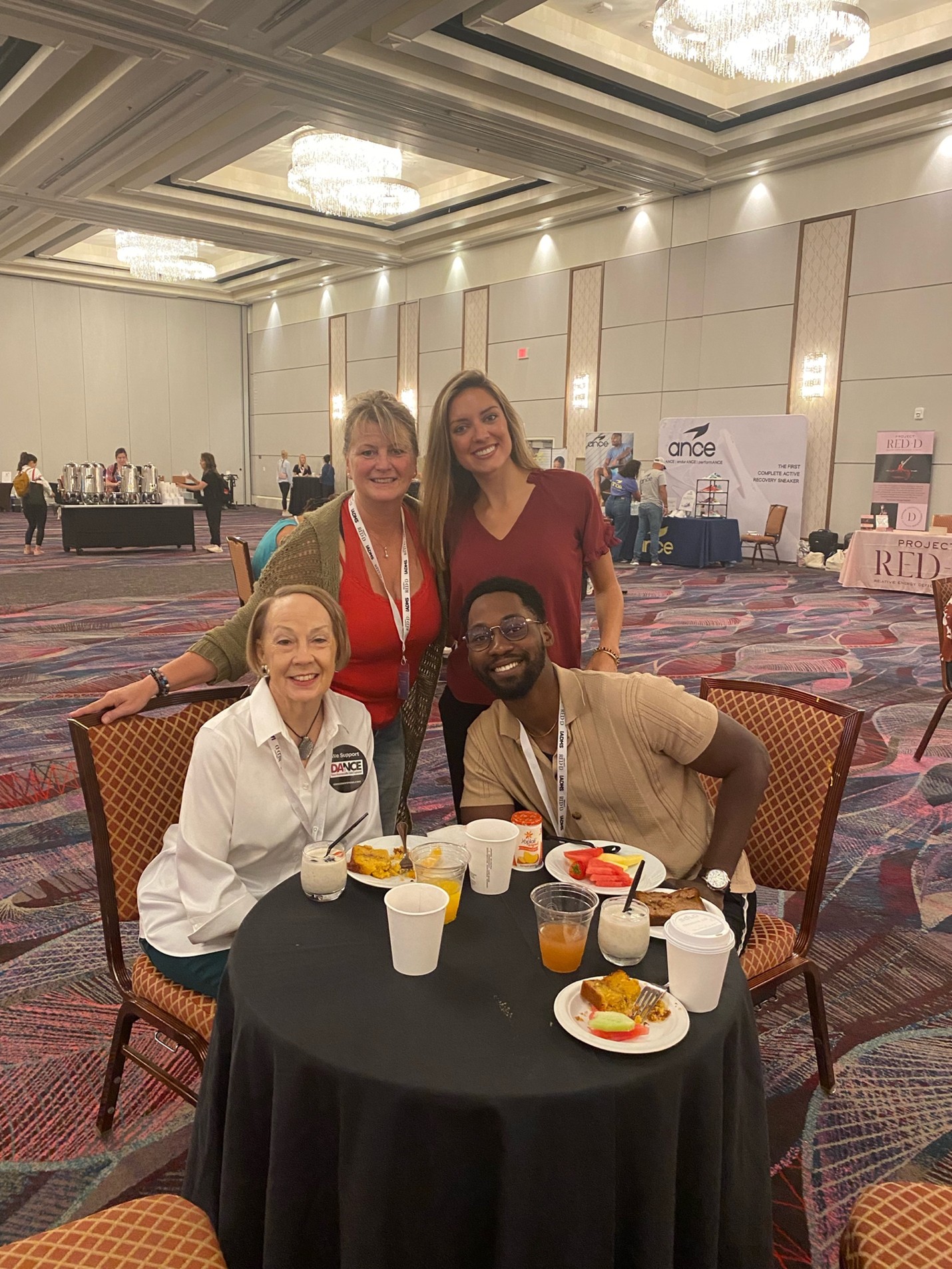Childhood is intended to be a period of curiosity, play, and paced growth – yet for many youth today, that season is narrowing. For those of us entrusted with the care and guidance of children, the urgent question is: how do we preserve their right to childhood in 2025? And for dance educators, more pertinently: how do we ensure that our studios, competitions, examination rooms, and all creative spaces that invite a child to encounter the joy of the dance – are safe and age-appropriate?
This article is a call for stronger standards, safer practices, and greater accountability in children’s dance education – one of Australia’s most influential cultural activities. We examine the broader forces shaping ‘Generation Alpha’, the problem of premature sexualisation and its documented impact on wellbeing, and the gaps in regulation that leave dance education lagging behind other child-facing industries. These matters are imperative for all current and future dance teachers. By addressing them, we acknowledge that our role as dance educators is not merely to provide instruction but, more significantly, to serve as custodians of healthy childhood development.
Navigating Childhood in 2025
‘Generation Alpha’ – the first generation raised entirely in the 21st century – are largely characterised by their passion, global awareness, and considerable exposure to technology and media. Highly socialised and connected, this brings exciting possibilities as today’s youth have a heightened understanding of the world around them, and hold the potential to inspire great impact. Simultaneously, this generation navigates unprecedented challenges. As renowned author and psychologist Steve Biddulph wrote in 2017, children have “…lost four years of childhood” through the ‘adultified’ messages and expectations they are prematurely shouldering – a loss likely greater today.
Online spaces are saturated with noise, trends, and social pressures – with one of the most concerning issues being the exposure to sexualised material. Once hidden in magazines under the bed, such content now forms the wallpaper of modern life, and Gen Alpha is the first to grow up fully embedded in it.
Defining Sexualisation
The Australian Psychological Association (APA) defines sexualisation as a process that reduces a person’s value to their sexual appeal or physical appearance, often disregarding other attributes. It occurs when physical attractiveness – often based on narrow and unrealistic standards – is equated with being sexually desirable, and when individuals are treated as objects for others’ use. ‘Hypersexualisation’ takes this a step further; often amplifying stereotypes and imposing it onto inappropriate contexts, such as children.
The APA stresses that such dynamics teach children to internalise the notion that their worth is fundamentally tied to how they look – and how others evaluate their attractiveness. Extensive research over decades confirms that exposure to such messages, and encouragement of adult sexual behaviours among children, impacts multiple core areas of childhood development:
- Cognitive and emotional consequences: undermines confidence and comfort with one’s own body, leading to emotional and learning difficulties.
- Mental and physical health: linked to eating disorders, low self-esteem, depression, poor self-image, body dissatisfaction, and appearance-related anxiety.
- Sexual development: premature sexualisation negatively affects the ability to form a healthy sexual self-image, understand sexuality, and practise self-protective behaviours in adolescent relationships.
The side effects are stark, with youth mental health reaching unprecedented levels in Australia:
- One in three children aged 8 – 13 experience mental health problems; one in six have an anxiety diagnosis, and one in four have depression;
- Eating disorders cost Australia $67 billion annually in economic and wellbeing losses, with rates doubling among 10-19 year olds over the last decade;
- More than half of 12-18 year olds and one third of adults are dissatisfied with their appearance;
- One in five teenagers experience high levels of psychological distress; one in 13 will consider suicide, and one in 40 will attempt it.
How can children form healthy views of identity, gender and relationships, discover their gifts, succeed at school and in extra-curriculars, dream big and live well – when daily exposure to media and culture reduces them to the sum of their body parts?
These pressures extend beyond screens, permeating everyday spaces – including dance studios.
Hypersexualisation of Children in Dance Education
When viewed through the lens of human rights, there is an evident gap between principle and practice in dance studios. Article 31of the United Nations Convention on the Rights of the Child (ratified by Australia in the 1990s) states that:
States Parties recognize the right of the child to rest and leisure, to engage in play and recreational activities appropriate to the age of the child and to participate freely in cultural life and the arts.
Yet in practice, dance education can fall dramatically short of this standard. If this principle were upheld across the industry, with all teachers ensuring students learn in a manner ‘appropriate to the age of the child’, we would not see:
- Costumes imbued with adult sexuality designed for a child, particularly items akin to lingerie or underwear, items that allude to nudity or draw focus to the chest, groin or buttocks through style, cutouts, slogans or embellishments;
- Music and concepts containing sexualised or mature themes, including – but not limited to – sex, objectification of the female or male body, violence and anti-social behaviour;
- Choreography that mimics adult dance or sexual behaviour through: twerking, thrusting, spanking, movements that draw attention to the crotch or groin, straddling or sexualised use of props, as well as self or partner touching with a sexually suggestive demeanor or expression;
- Language in the delivery of dance instruction that fosters the belief that physical attractiveness – and achieving a specific body weight, shape or type – is essential to participating in dance;
- Public social media accounts (studio or other dance related businesses) using child dancers in their marketing who have been styled and directed to look or behave older than their years. There are a plethora of issues that could be discussed here – most notably the unmoderated paedophilic comments from unknown users who can retain images and use them as they wish.
A culture that normalises the sexualisation of children creates serious risks for safety and wellbeing. It lays the groundwork for exploitation and increases the likelihood of grooming and other predatory behaviours. Over a decade ago, a devastating case of child sexual abuse in a large, influential Australian dance studio rocked the industry. Concerns about the sexualised nature of choreography, costuming, and other studio practices had already been widely held prior to the case coming to light. Children and families had become accustomed to these harmful practices, which gradually eroded natural boundaries and awareness of consent. This created an environment in which grooming and abuse could occur, with devastating consequences for the young lives involved.
This makes it all the more urgent that dance studios uphold standards of protection and age-appropriate practice. Hyper-sexualisation has no place in dance, and it needs to take its final bow now.
Children’s Dance Education in Australia
These are not marginal issues affecting only a handful of children – dance is no longer a niche past-time, with participation rates soaring to over half-a-million children engaged in an estimated 4,000 dance studios. Despite post-pandemic enrolment declines, dance is still the nation’s 4th most popular organised activity for children, surpassed by swimming, gymnastics and football.
With a myriad of genres to explore – and competitions filling weekend calendars, dance camps, workshops, college-style programs, examinations, physiotherapy appointments, costume fittings, rehearsals, concerts and performances – dance is an all-encompassing part of childhood. It is a subculture; a way of life that shapes a child’s developing identity and worldview. Alongside the physical benefits, children build discipline, resilience, confidence, adaptability, creativity, teamwork, empathy and agency. The influence of a dance teacher can be profound, and overwhelmingly positive.
This influence, however, comes with enormous responsibility. To be a dance teacher is to be akin to any other position that delivers education or leads a child – it is to be a custodian of healthy childhood development:
custodian
noun [ C ] /kʌsˈtəʊ.di.ən/
a person with responsibility for protecting or taking care of something or someone
Given this, it begs the question as to why:
1/ A school teacher achieves custodian status by studying full time for at least three years prior to stepping foot unaccompanied into the classroom – and then is mandated by rigid child protection policies and procedures; and
2/ Australia’s top three sports for children (swimming, gymnastics and football) are governed by national associations that regulate and resource their custodians, for the safety of all children in their care; yet for the 4th most popular sport:
Any person can title themselves as a teacher of dance – a custodian – and market themselves as so. They may gain access to an unlimited number of children and young people through private businesses, events and social media platforms, and, depending on the state they are working in:
- Hold no formal teaching qualification;
- Have no child protection training;
- Hold a ‘Working With Children Check’ (WWCC) or equivalent, that may or may not be verified by employers. For clarity, this is a verification number which all adults who work in child-facing employment must apply for, to have their criminal background checked. It varies by Australian state and is mandatory for a dance teacher to have, however there is very little governance;
- Open a studio and employ staff with no ethical teaching standards or policies established.
Though some Australian states have mandated child safe standards for businesses – it is the lack of uniformity and governance that is of paramount concern, as well as the relevance to our nature of business activity.
This fractured approach to child safety persists despite Australia’s Royal Commission into Institutional Responses to Child Sexual Abuse – which included performing arts centres and delivered strong recommendations, yet remains unheeded a decade later. It persists despite the current investigation of a dance teacher facing allegations of child grooming and misconduct, who was able to move states and continue teaching. It persists despite decades of heartache behind studio doors.
The time for inaction is over. Multitudes of young dancers are looking to us – their custodians – for protection and preservation.
Towards Reform: A Safer, Stronger Future for Children’s Dance Education
Reform in dance education requires collaboration across all stakeholders. We need government support, engaged communities – teachers, families, students, trauma-informed specialists – and peak advocacy bodies that understand the sector and can represent it effectively. In Australia, Dance Arts Alliance (DAA) has been working tirelessly to bring issues of child safety in dance to government and community attention. They have made groundbreaking progress this year in engaging with key voices within government and child protection authorities who are starting to listen.
As DAA’s Position Paper, The Imperative for Regulating the Dance Industry in Australia, emphasises, regulation is not about imposing unattainable, irrelevant standards. Instead, it is about designing a policy framework that supports, empowers and understands the industry. Such a framework would give parents assurance that their child is safe and cared for, while building valuable cohesion amongst studios, competitions, syllabus and examination boards, youth companies, and all contributing to dance education.
Imagine a future where:
- All studios and organisations providing services to children must be affiliated with a recognised national body, such as: ‘Dance and Performing Arts Australia’;
- We are mandated to a national child protection framework specific to dance education, that ensures compliance, guidance, and accountability;
- Teachers are registered, with qualifications and background checks available for prospective employers to view and assess;
- Studios receive ongoing support and resources to operate safely and effectively;
- Ethical, age appropriate and healthy teaching practices and standards are implemented consistently.
In this vision, curriculum across all dance teaching qualifications equips educators with the tools to teach and support Generation Alpha effectively. Modules on understanding the unique needs of today’s children – including the risks of hypersexualisation – would train educators to distinguish harmful from age-appropriate practices, provide guidance on healthy, empowering alternatives, and ensure that classrooms and stages remain a space of creativity and joy.
By embracing such reforms, dance can become a model for child safety and ethical, creative education, proving that high safety standards and thriving studios are not mutually exclusive. With a unified approach and by taking child safety to centre stage now, dance can continue to inspire, nurture, and empower our young people – without compromising their childhood or wellbeing.
© Jemma Powys 2025. All rights reserved. This article is provided for editorial consideration only and may not be reproduced, published, or distributed without written permission from the author.
Jemma Powys is the founder of Inspire Creative Arts, an established performing arts studio based in Sydney, Australia. After nearly 30 years of dancing and 17 years of business ownership and teaching, Jemma has devoted her career to nurturing young artists in an environment that fosters creativity, confidence and care. In 2016 she launched KidsPace, an initiative championing best practices in creative and performing arts education, with a strong focus on child safety, mental health and wellbeing. A passionate advocate for safeguarding childhood, Jemma believes that healthy, empowering arts communities can profoundly shape and uplift the lives of children and young people. She serves on the board of Dance Arts Alliance – an association advocating for increased child safety protections in children’s dance education settings. Jemma lives in Sydney with her husband and two young daughters – who already share her love and passion for dance.
Social Media Links:
References:
- Australian Psychological Association, Submission to the Senate Committee Inquiry into Sexualisation of Children (2016): https://psychology.org.au/getmedia/a3f37992-be53-404f-b8b4-3b297bd5685c/submission-nsw-sexualisation-inquiry.pdf
- Papadopoulos, L. 2010, Sexualisation of Young People Review
- Royal Australian and New Zealand College of Psychiatrists, ‘Position Statement #58 Sexualisation of Children in Contemporary Media’ (2008)
- Sexualisation of Children: The Commissioner for Children and Young People’s 2013 Report on the Sexualisation of Children. Joint Standing Committee on the Commissioner for Children and Young People (WA), 2014.
- Tiggeman, M. & Slater, A. 2014 “Contemporary Girlhood: Maternal reports on Sexualised Behaviour and Appearance in 4-10 year old girls”
- The Australian Institute, ‘Corporate Paedophilia: Sexualisation of Children in Australia’ (2006)
- American Psychological Association: APA Task Force into the Sexualisation of Girls (2007)
- Australian Bureau of Statistics (2020-2022) National Study of Mental Health and Wellbeing: https://www.abs.gov.au/statistics/health/mental-health/national-study-mental-health-and-wellbeing/latest-release
- The Butterfly Foundation and Deloitte Access Economics ‘Paying the Price: The economic and social impact of eating disorders in Australia’: https://www.deloitte.com/content/dam/assets-zone1/au/en/docs/services/economics/deloitte-au-eco-paying-the-price-second-edition-180724-new.pdf



